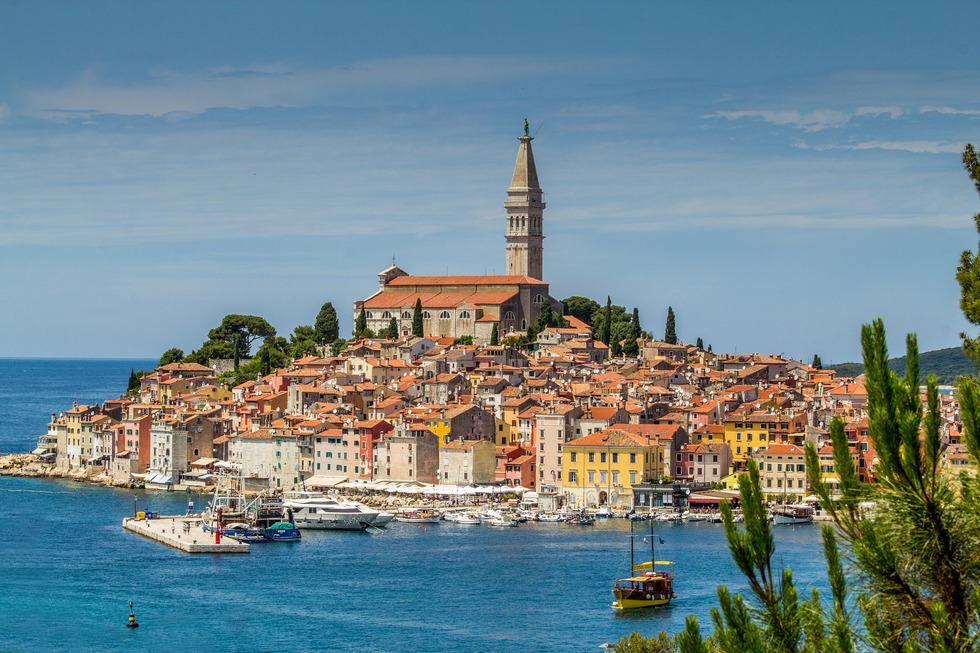Retire in Croatia: A complete guide for expats

Croatia is capturing the attention of global retirees with its Adriatic vistas, rich culture, and peaceful pace. To retire in Croatia means navigating new residence rules, healthcare access, and local taxes – but many say the rewards are worth it. With US citizens increasingly seeking places where their savings stretch further, Croatia offers a compelling option where quality of life meets affordability in cost and comfort.
This article is brought to you by Taxes for Expats, a trusted partner helping Americans abroad manage their US taxes with confidence. We make sure your filings stay compliant while you focus on enjoying your new life along Croatia’s stunning coast. Learn more about our services or contact us to get started.
Why Croatia feels made for your next chapter
For retirees dreaming of sea views, historic charm, and modern stability, Croatia offers everything that makes a new life abroad feel effortless.
- From sun-soaked islands to emerald lakes and mountain air, Croatia’s landscapes create an everyday sense of peace. With more than 2,500 hours of sunshine each year and over 1,200 islands to explore, it’s easy to understand why so many choose to slow down here.
- The cost of daily life is refreshingly moderate, with groceries, dining, and housing often 40–50% lower than in the United States. Compared to Western Europe, retirees enjoy similar comfort for far less – freeing more of your budget for travel and leisure.
- Mornings start with espresso by the sea, afternoons bring local markets and music festivals, and neighbors greet you by name. The relaxed rhythm of life is what makes many visitors realize that Croatia is a good place to retire.
- Croatia continues to modernize without losing its charm. The new border EES system launches on 12 October 2025, while ETIAS won’t take effect until late 2026, and retirees aged 60+ who own homes can extend their stay more easily.
- Visitors can drive with a US license and an International Driving Permit, while residents may use theirs for up to 12 months before exchanging it. As part of the Schengen Area, a Croatian residence card lets United States citizens travel freely for up to 90 days within other Schengen countries.
- Opening a local bank account is straightforward once you have an OIB (tax ID). Every day life runs smoothly on the Euro – cash, cards, and contactless payments are widely accepted – making Croatia both accessible and comfortable for retirees ready to settle in with ease.
How Americans can get residency in Croatia
Once you’ve fallen for the lifestyle, the next step is learning how to make Croatia your legal home. One noteworthy fact is that short stays for Americans are straightforward, but living here full-time requires the correct Croatian status and paperwork.
Most Americans who retire in Croatia choose to stay long-term through Croatia’s regular residence permits. The process is clear once you know the available options and required documents.
- Temporary residence is usually issued for up to one year and can be renewed as long as you still meet the conditions.
- You’ll need a valid passport, proof of purpose, evidence of sufficient funds to live comfortably, and active health insurance coverage.
- Citizens of visa-exempt countries may apply directly at a local police administration after entering Croatia, while others apply at a Croatian consulate before arrival.
- Expect administrative costs of around 46.45 EUR for the residence decision, 31.85 EUR for the card itself, and 9.29 EUR for issuance – these government fees are part of the total cost of settling here.
- Be sure to register your Croatian address within three days of arrival once your temporary stay is approved.
- There isn’t a separate “Croatian retirement visa” as such; instead, retirees apply for a temporary stay for other purposes or under property ownership, both of which are suitable for those living on pensions or savings.
- Retirees aged 60 or older who own Croatian property may renew their stay more easily, and this option extends to a spouse or long-term partner as well.
After receiving residence approval, every non-EU retiree must comply with Croatia’s health insurance regulations. Having medical protection in place is essential to ensure access to clinics, hospitals, and pharmacies across the country.
- You must show valid health insurance when submitting your residence application.
- Once your stay is approved, register with the Croatian Health Insurance Fund (HZZO) to activate your compulsory coverage. This allows retirees to access public doctors, hospitals, and prescription medicine under Croatia’s health system.
Special visa & residency rules for EU and non-EU nationals
EU and EEA citizens simply register their temporary stay if they plan to remain in Croatia longer than three months, filing this registration no later than eight days after the 90-day mark. They have the right to work, receive healthcare, and live freely, paying only 13.27 EUR for a five-year biometric residence card.
Non-EU nationals, including retirees from the United States, can visit visa-free for up to 90 days within a 180-day window under Schengen rules. To live here longer, you must apply for temporary residence through Croatia’s police administration, prove your purpose of stay, show reliable income, and maintain valid insurance. Fees are the same as above, and you must register your address within three days of approval. Over time, maintaining continuous residence for five years allows you to qualify for long-term residence.
For many older Americans, this process replaces what they imagine as a special Croatia retirement visa – to fully understand their requirements, the Aliens Act explains further.

Cost of living in Croatia for US retirees
After sorting visa paperwork, your next focus should be on managing your cost of living expenses, which is why we summarized and provided a realistic snapshot for anyone retiring in Croatia and planning their monthly budget, using data from Numbeo.
| Categories | Items | Amounts (EUR) |
|---|---|---|
| Housing and real estate prices | Apartment (1 bedroom) in city centre; Apartment (1 bedroom) outside centre; Buy price in city centre (per m); Buy price outside centre (per m) | €659.64; €510.20; €4,846; €3,458 |
| Food, transport, and daily essentials | Meal at inexpensive restaurant; Bread (500 g); Eggs (12); Monthly public transport pass | €12.00; €1.72; €3.84; €47.74 |
| Healthcare insurance index | Health Care Index (Croatia, 2025); Cost satisfaction score; Responsiveness score | 65.10; 76.67 / 100; 37.83 / 100 |
Healthcare system in Croatia for retirees
Moving from the US can be hectic, especially when it comes to figuring out new health measures. In Croatia, the healthcare system combines public and private options – both accessible to foreign retirees who know how to enroll.
Public coverage is run by the Croatian Health Insurance Fund (HZZO) and financed mainly by social contributions, with 84.1 percent of health spending public in 2021. Private care is available through complementary policies that cover co-payments and through private clinics for faster access. Within this healthcare system, out-of-pocket spending represented about 9.4 percent of current health expenditure in 2021.
Third-country nationals who gain temporary or long-term stay enroll with HZZO for compulsory coverage, while digital nomads must carry private health insurance for the full permit period. Americans arriving from the United States who become residents follow the same HZZO enrollment rules set by law. Hospital capacity remains strong at about 584 beds per 100,000 people in 2022, which supports reliable access for those who plan to retire in Croatia.
Where to retire in Croatia that feels like home
With healthcare, cost of living, and residency sorted, you can choose where in Croatia your new chapter begins, whether your dream is mornings by the Adriatic or afternoons in cobblestoned towns, these destinations reveal how life here can feel both grounded and adventurous for retirees.
Coastal town charms: Split, Dubrovnik, Zadar
Life moves with the tide along Croatia’s coast. Split hums with over 160,000 residents, Dubrovnik glows with around 41,500, and Zadar balances it all with 70,800 locals. A single person spends about $998 per month in Split, Dubrovnik runs slightly higher, and Zadar lands near $910, reflecting the national average.
These seaside cities are welcoming to anyone retiring in Croatia – English is common, communities are friendly, and history surrounds you in every stroll. From Split’s Diocletian’s Palace to Dubrovnik’s iconic walls and Zadar’s singing Sea Organ, each city keeps your days full of discovery.
The heartbeat of everyday life: Zagreb
Croatia’s capital fuses culture and comfort. It’s home to more than 767,000 people, offering modern hospitals, art galleries, and international schools all within walkable neighborhoods.
- Average single-person cost: about $941 per month (excluding rent)
- The United States Embassy is right here, making paperwork and assistance simple for Americans abroad
- Winter glows with Advent in Zagreb, Europe’s top-rated Christmas market, making Zagreb ideal for retiring in Croatia, with an urban rhythm and quick access to the rest of Europe.
Peaceful inland escapes: Istria and Slavonia
Istria rolls with vineyards and hilltop villages where time slows down beautifully. In Pula – population about 52,000 – Roman amphitheaters and seaside cafés share the same skyline. Numbeo’s data shows that everyday expenses align with Croatia’s average, while rent stays lower than on the coast. Locals are known for their warm blend of Italian and Croatian hospitality, making settling in easy and joyful.
Further east, Slavonia delivers authentic countryside life. Osijek, its largest city with nearly 97,000 residents, lets retirees live comfortably on modest budgets below Zagreb’s. Its riverside promenades, lively markets, and baroque fortress district (Tvra) create a sense of belonging. For those from the United States seeking quiet value and genuine connection, this region feels timeless.

Taxes in Croatia for US pensioners
As you picture life in Split or Zagreb, remember – Croatia taxes pension income for resident foreigners and sets local brackets by city, and to help you, we have identified the flags in property levies and filing tactics for retiring in Croatia, especially for Americans.
- Foreign pensions received by Croatian tax residents are taxed as employment income. Monthly advance tax is 20 percent up to 3,981.68 EUR and 30 percent above that amount, then reduced by 50 percent.
- No bilateral income tax treaty with the United States has been ratified, so there is no treaty in force, and Croatian rules apply to resident pension income. Most Americans rely on the Foreign Tax Credit for pensions because the Foreign Earned Income Exclusion covers earned income, not pensions.
- Municipalities and cities set two personal income tax brackets within national ranges, and each locality posts its current rates. Typical ranges run from 15 to 23 percent for the lower band and 25 to 33 percent for the higher band, with Zagreb at the top end.
- From January 1, 2025, an annual local property tax applies at 0.60 to 8.00 EUR per square meter, set by your municipality and billed after assessment. Real estate transfer tax remains 3 percent of the market value when VAT does not apply.
- Keep Croatian tax receipts and annual summaries to support a Foreign Tax Credit claim on Form 1116. Using credits pairs cleanly with pension income, while the FEIE is not designed for pensions.
Get expert tax guidance for your retirement in Croatia
Planning to retire in Croatia means more than securing a seaside home – it also means managing a new layer of tax responsibility. Your retirement income, Social Security, and pensions may all be taxed differently under Croatian law while still reportable to the IRS. These overlapping rules can be confusing and, if mishandled, may lead to double taxation or penalties.
Taxes for Expats ensures your retirement finances stay compliant and optimized, so you can relax and enjoy life on the Adriatic coast with peace of mind.

FAQ
Choose a residence basis, gather apostilled documents, register your address, apply at MUP, obtain an OIB, enroll with HZZO, then open a bank account and calendar renewal dates.
Work with a reputable bilingual agent, verify the land registry, obtain an OIB, sign a pre-contract with a standard deposit, register title, and budget for the 3 percent real estate transfer tax plus notary and agency fees.
Get a monthly transit card for buses and trams, drive with a US license and IDP for up to 12 months before exchanging it, pay utilities through your bank, carry your HZZO card for healthcare visits, and learn a few Croatian phrases to make everyday interactions easier.



